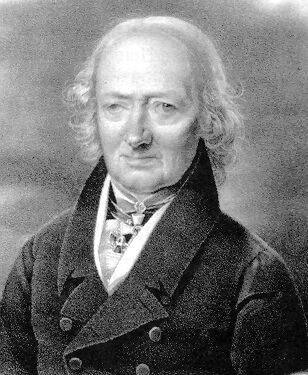THE SOUTHWORTH PLANETARIUM
70 Falmouth Street Portland, Maine 04103
(207) 780-4249 usm.maine.edu/planet
43.6667° N 70.2667° W
Altitude: 10 feet below sea level
Founded January 1970
2021-2022: CXXXVII
"You can't depend on your eyes when your imagination is out of focus."
-Mark Twain
THE DAILY ASTRONOMER
Wednesday, June 15, 2022
The Law of Bode
Today's astronomical morsel, Mr Meeus, involves a nifty little number trick that will enable even the most hopeless math phobe to use numbers to approximate average planet distances from the Sun. We call this trick "Bode's Law," and it does involve mathematics, in the same way that clicking a mouse requires physical exertion. It is as simple in its application as it is eerie in its accuracy.
We first introduce a term
ASTRONOMICAL UNIT
the average separation distance between Earth and the Sun. This distance is equal to 149.5 million kilometers, or about 93 million miles.
We can approximate most of the planets' distances now by first writing the numbers 0 followed by 3. Then double each number until reaching 192
0 3 6 12 24 48 96 192
Next, we add 4 to each number
4 7 10 16 28 52 100 196
Finally, we simply divide each number by 10
0.4 0.7 1.0 1.6 2.8 5.2 10.0 19.6
The first value (0.4) is close to Mercury's average distance from the Sun in astronomical units. The actual value is 0.39
The second value (0.7) is close to Venus' average distance from the Sun. The true value is 0.72.
The third value, 1.0, is equal to Earth's average distance (in AU) from the Sun.
We can perhaps now see the progression. The value 1.6 is close to Mars' average distance from the Sun of 1.52.
What is at 2.8, you ask?
The asteroid belt!
At 5.2? That is the exact value of Jupiter's average distance from the Sun.
10.0? Saturn's average distance from the Sun is 9.52 AU.
19.6? Uranus' average AU distance from the Sun is 19.2
Now, this numerology trick is all the more remarkable when we study its history. We refer to this relation as "Bode's Law" because German astronomer Johann Bode (1747-1826) included this relation as a footnote in his 1772 work "Manual for Knowing the Starry Sky." At that time, neither Uranus nor bodies now known as the asteroids within the Main Asteroid Belt had yet been discovered. William Herschel discovered Uranus in 1781. Piazzi discovered Ceres, the largest asteroid, on January 1, 1801.
The law is sometimes called "The Titius-Bode Law" because in 1766 Johann Titrius (1729-1796) had developed the relation based on calculations performed by Genevan scientist Charles Bonnett (1720-1793). Bode based his own sequence on those previous computations.

Johann Bode: the German astronomer for whom
the Bode's Law is named. Even though this numerical
relation is no longer seriously regarded, it has retained the
name "Law."
Initially, most astronomers did not take this Law seriously. Even when William Herschel discovered Uranus in 1781 at approximately the position predicted by Bode's Law, most assumed the relation was merely coincidental. However, when Giuseppe Piazzi (1746-1826) discovered Ceres in the region around 2.8 AU from the Sun, Bode's Law came into vogue. It remained a revered law until Johannes Gale and Heinrich d'Arrest discovered Neptune in September 1846. Neptune's average distance is about 30.1 AU. Bode's Law predicted the next planet should be around 38.8 AU from the Sun. (Ironically, this approximation is close to Pluto's average distance of 39.5 AU.)
Even though Bode's Law was relegated to the dust bin, it hasn't been entirely forgotten because it offers us a simple way to remember the average distances of most planets. Most would dismiss Bode's Law as a lucky guess, but, what a guess!
To subscribe or unsubscribe from the Daily Astronomer: